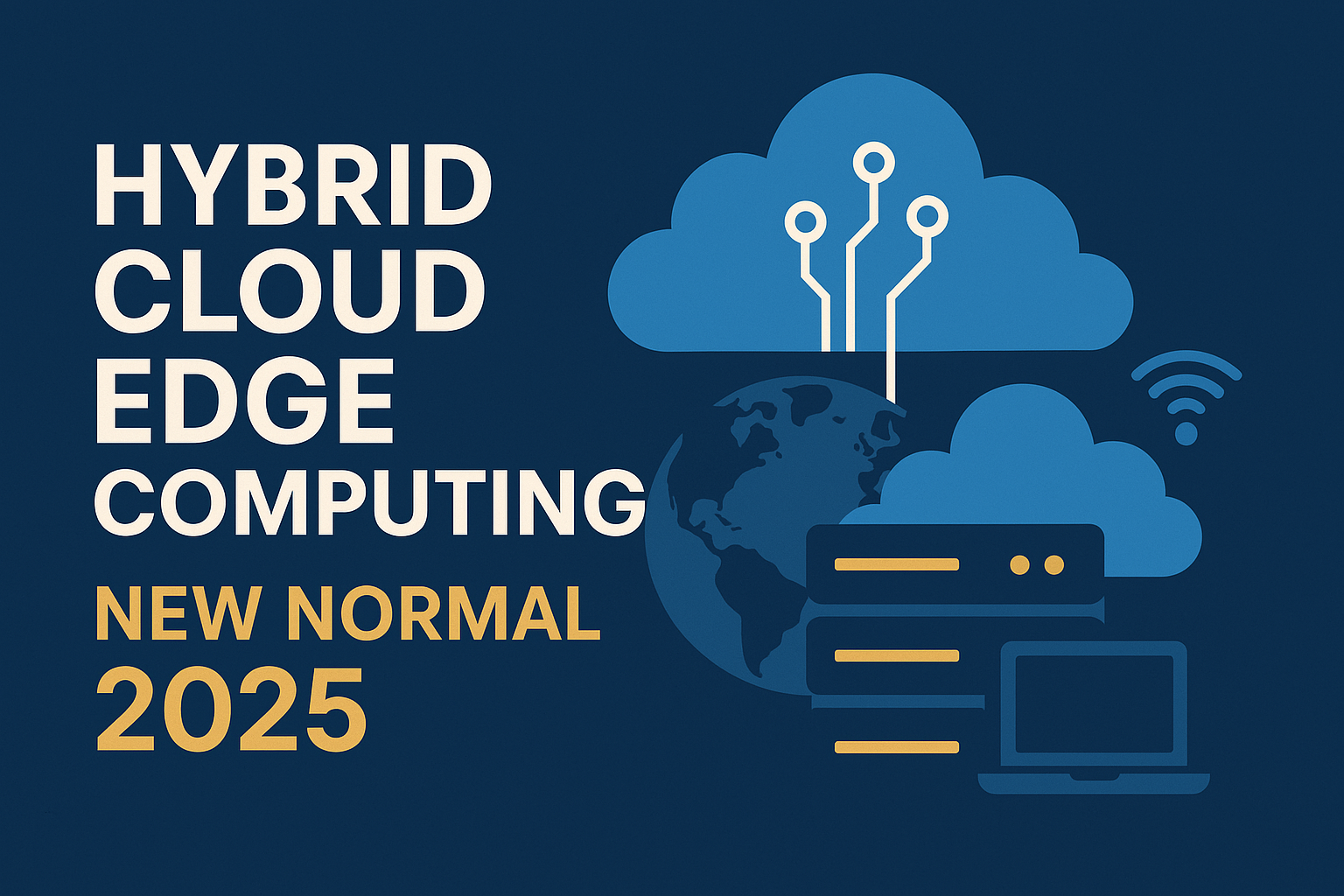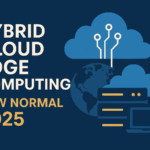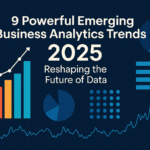
Hybrid Cloud Edge Computing New Normal 2025 — Fancy tech phrase thrown around in boardrooms or slapped onto IT brochures. It’s a seismic shift — and it’s happening rig New Normal 2025 isn’t just another fancy tech phrase thrown around in boardrooms or slapped onto IT brochures. It’s a seismic shift — and it’s happening right now. As someone who’s been deep in the world of cloud transformations and emerging technologies, I can say with confidence: this change is bigger than we imagined. Let me take you on a journey where you’ll learn not just what it means but also how it could change your operations in powerful ways.
Why This Shift Matters
I remember the days when cloud computing alone was seen as revolutionary. Just being able to run services on AWS or Microsoft Azure felt like magic. Fast forward to 2025, and the game has evolved. Today, hybrid cloud edge computing is no longer a nice-to-have — it’s the new norm. The concept merges the best of both worlds: cloud scalability and edge immediacy. It’s helping businesses, from startups to tech giants, achieve ultra-fast responsiveness, data sovereignty, security compliance, and real-time processing power that standard cloud models alone just can’t deliver.
Let’s dig in.
What Is Hybrid Cloud Edge Computing?
At its core, hybrid cloud edge computing combines public cloud, private cloud, and edge computing infrastructures. You’re distributing workloads in a way that puts compute power close to where the data is generated while still maintaining the elasticity of cloud environments.
Think about it this way:
- You process sensitive data in a private on-premise cloud.
- You offload massive non-sensitive analytics to public cloud providers.
- Meanwhile, edge nodes right beside your users or IoT sensors deliver real-time responses.
In essence, you’re creating a multi-tiered infrastructure where every layer works together to chieve faster performance, lower costs, and tighter control.
Why Hybrid Cloud Edge Computing Is the New Normal in 2025
Y
You might wonder, “Why now?”
Well, several converging factors are driving the shift:
1. Explosion of Data at the Edge
IoT devices, smart cameras, autonomous vehicles, remote sensors — they’re producing petabytes of data. Sending all that to a central cloud just isn’t scalable. Instead, edge computing allows initial processing to happen locally. Hybrid setups let you decide what stays local, what gets sent to the cloud, and what gets archived.
2. Latency-Sensitive Applications
Industries like healthcare, fintech, manufacturing, and logistics can’t afford delays. Imagine a factory floor where AI needs to detect anomalies in real-time. You can’t wait 400ms for the cloud to respond. Edge computing, when married to the hybrid cloud model, delivers sub-10ms latency.
3. Regulatory and Data Sovereignty Rules
As someone living in Canada, I’ve had clients concerned about data sovereignty laws. They want data processed within their country’s borders. Hybrid cloud gives them that option through private deployments, while still enjoying public cloud scale when needed.
4. AI and Machine Learning at the Edge
AI isn’t confined to server farms anymore. Edge AI is booming. According to Gartner, by 2025, over 50% of enterprise data will be created and processed outside traditional data centers. Hybrid cloud edge computing supports this trend flawlessly.
Real-Life Use Cases You Should Know
Let me paint a few pictures.
Smart Retail
Imagine walking into a store. Cameras analyse your movement, suggesting personalised promotions on digital screens in real-time. These insights are processed locally via edge nodes to maintain speed and privacy, while the broader trends are analysed in the cloud for business decisions. That’s hybrid cloud edge computing at play.
Healthcare Monitoring
Remote patient monitoring tools generate massive health data every second. Immediate data needs to be processed locally to alert doctors. But historical data can live in the cloud. The hybrid model makes this possible while remaining HIPAA-compliant.
Logistics and Transport
I worked with a logistics company in 2023 that struggled with barcode scan latency at their warehouses. Cloud-only solutions were too slow. Implementing edge nodes on-site, connected to a hybrid cloud system, reduced scan-to-action time by 80%. Their operations became smoother, staff happier, and customers more satisfied.
Key Benefits of Hybrid Cloud Edge Computing in 2025
✓ Speed & Latency Reduction
Processing at the edge means faster results. We’re talking real-time decision-making, not just fast reporting.
✓ Cost Optimization
You only use cloud resources when needed. Storage and compute are optimized based on need, not guesswork.
✓ Enhanced Security & Compliance
Keep sensitive data within your borders. Process locally. Share globally.
✓ Operational Resilience
Even if internet connectivity drops, edge devices keep functioning. Cloud isn’t your only fallback.
✓ AI & ML Enablement
AI models trained in the cloud can run inferencing at the edge. This makes machine learning applications not just possible but practical in real-time environments.
Challenges You Should Prepare For
Complexity
Managing a hybrid cloud and edge infrastructure isn’t easy. Monitoring, governance, policy enforcement, and orchestration need streamlined tools.
Security Gaps
You’re expanding the attack surface. It’s vital to adopt zero-trust frameworks and encrypted communication.
Talent Gaps
It’s hard to find professionals with hybrid + edge experience. Upskilling and certifications are key.
Vendor Lock-In
Different cloud providers offer different edge services. Choose wisely or face future migration nightmares.
Best Practices for Deployment
From my experience, here’s a simple playbook for adopting hybrid cloud edge computing:
- Evaluate Workloads – Identify latency-sensitive vs scalable workloads.
- Select Right Platform – AWS Outposts, Azure Stack, Google Anthos offer hybrid capabilities.
- Use Containerization – Docker and Kubernetes make it easier to port workloads.
- Set Edge Policies – Define what gets processed where.
- Automate Everything – Use orchestration tools like Red Hat Ansible or Terraform.
- Secure the Pipeline – Implement IAM, VPNs, encryption, and regular audits.
- Monitor & Improve – Use telemetry to identify and refine performance.
Related Readings on Pegon Academy
- Beginner’s Guide to AI Model Deployment on Hybrid Cloud
- Critical UI UX Mistakes That Are Sabotaging Your Users Retention
External Sources
- Gartner Forecast: Distributed Cloud Strategies by 2025
- IBM: Hybrid Cloud & Edge AI Strategy for Enterprises
Where It’s All Going: 2025 and Beyond
They say the future is hybrid — and they’re right. But it’s also edge-enabled.
As 5G matures and IoT continues to expand, the dependency on central cloud models will decline. Edge nodes will power everything from smart cars to precision agriculture. Public cloud providers will act more like coordination hubs than centralised processors.
Even small businesses will benefit. Imagine a bakery using edge sensors to monitor oven temperature and pushing aggregate data to a cloud dashboard every 24 hours. That’s cost-effective, intelligent business without the tech headache.
Quick Recap
- Hybrid Cloud Edge Computing New Normal 2025: It’s real and it’s here.
- Combines cloud elasticity with edge immediacy.
- Improves latency, compliance, resilience, and AI performance.
- Challenges include complexity, security, and talent gaps.
- Deployment needs careful orchestration, containerization, and automation.
How Businesses Are Adapting to the Hybrid Cloud Edge Computing New Normal 2025
As we step deeper into the Hybrid Cloud Edge Computing New Normal 2025, I’ve noticed something inspiring — businesses are no longer asking “what is edge computing?” They’re asking how fast they can adopt it.
Take logistics companies, for instance. Many of them now deploy real-time edge analytics to track shipment conditions, locations, and performance metrics at the truck level — not just at the central server. These are not just early adopters; they’re the new benchmark for operational efficiency. That’s what the Hybrid Cloud Edge Computing New Normal 2025 looks like in action.
Edge, Cloud, and the Speed of Decision-Making
In 2025, it’s not just about connectivity anymore; it’s about proximity to data. You might ask yourself, why should I care?
Because milliseconds matter. A factory using machine learning at the edge can detect and correct defects immediately — instead of sending data back to a remote server and waiting for a response. The hybrid cloud keeps data backed up and scalable while the edge delivers speed. That’s the sweet spot of the Hybrid Cloud Edge Computing New Normal 2025 — agility, precision, and data sovereignty rolled into one.
I recently sat in on a panel discussion where IT leaders from Africa, Europe, and Southeast Asia all echoed the same message: hybrid cloud and edge aren’t just IT strategies anymore — they’re business mandates.
“You cannot afford to run a smart city, smart farm, or smart factory in 2025 without edge-enabled infrastructure,” said one CTO from a major telecom company in Nigeria.
More Than Just Tech: It’s a Cultural Shift
Another thing I’ve learned while researching the Hybrid Cloud Edge Computing New Normal 2025 is this — it’s also a shift in mindset.
Companies that succeed in this new normal are the ones willing to unlearn outdated legacy processes. They experiment, fail fast, and rebuild faster. They invest in training their teams, not just in tools. They form multi-disciplinary squads where developers, cybersecurity experts, and business analysts collaborate from day one.
It’s not a one-size-fits-all approach. Some firms start small with edge deployments in just one department — like predictive maintenance for factory lines — then scale into full hybrid environments. Others migrate entire operations to containerised cloud-edge models using tools like Azure Arc or AWS Outposts.
No matter the path, one thing remains clear — Hybrid Cloud Edge Computing New Normal 2025 isn’t coming. It’s already here.
Final Thoughts: Your Call to Action
So here’s the deal. Whether you’re a CTO at a large fintech or an entrepreneur running logistics software in Nigeria, this shift affects you.
Hybrid cloud edge computing is not some futuristic vision. It’s already the new normal in 2025. It’s practical, powerful, and incredibly promising.
Start by asking:
- What workloads can I decentralize?
- What latency-sensitive operations can benefit from edge?
- Can I test a pilot with edge plus cloud?
I encourage you to bring your IT team into the conversation. Or just start small with one edge node and grow. I’m happy to share templates, guides, and architecture samples if you reach out.
The future is hybrid. The frontier is edge. Don’t wait.
FAQ
Q: How is hybrid cloud edge computing different from traditional hybrid cloud?
A: Traditional hybrid cloud involves private + public cloud integration. Adding edge means bringing compute power directly to physical locations near the user or data source, drastically reducing latency.
Q: What industries benefit most from hybrid cloud edge computing in 2025?
A: Logistics, healthcare, manufacturing, retail, smart cities, agriculture, and fintech are front-runners.
Q: Is it expensive to adopt?
A: Start small with a proof-of-concept. Many edge solutions are scalable and cost-effective over time, especially when paired with hybrid cloud resource optimization.




